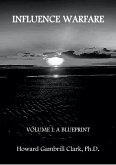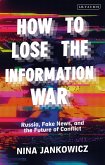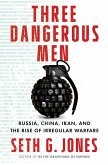1: Political Warfare: Defines how nations use non-military methods to weaken opponents.
2: Disinformation: Explores the use of false information to destabilize governments.
3: Psychological Warfare: Examines tactics designed to manipulate perceptions and behaviors.
4: Black Propaganda: Covers deceptive communication intended to mislead and harm reputations.
5: Active Measures: Analyzes Soviet-era disruption tactics, still relevant today.
6: Subversion: Discusses undermining institutions from within to weaken states.
7: Agent of Influence: Explores how foreign actors covertly shape policies and opinions.
8: Psychological Operations (U.S.): Reviews U.S. military strategies to influence enemy perceptions.
9: Clandestine HUMINT and Covert Action: Covers intelligence gathering and covert operations in political warfare.
10: Three Warfares: Analyzes China's blend of psychological, media, and legal warfare.
11: CIA Cryptonym: Reveals the coded language of CIA operations in political warfare.
12: Blowback (Intelligence): Investigates unintended consequences of covert actions that backfire.
13: Office of Policy Coordination: Chronicles the U.S. office responsible for political warfare.
14: Directorate of Operations (CIA): Reviews the CIA division for covert and clandestine activities.
15: CIA Activities in the Soviet Union: Explores the Cold War intelligence conflict with the Soviet Union.
16: Yuri Bezmenov: Details the defector's revelations on Soviet subversion.
17: Chinese Information Operations: Examines China's approach to digital-era political warfare.
18: Doolittle Report, 1954: Analyzes the report that reshaped U.S. covert operations.
19: Radio Propaganda: Covers the use of radio broadcasts as a propaganda tool.
20: Active Measures Working Group: Explores U.S. efforts against Soviet disinformation campaigns.
21: Dezinformatsia: Analyzes Soviet disinformation tactics and their modern relevance.
This book provides a thorough understanding of political warfare, equipping readers to analyze its ongoing impact in global politics.
Dieser Download kann aus rechtlichen Gründen nur mit Rechnungsadresse in A, B, BG, CY, CZ, D, DK, EW, E, FIN, F, GR, H, IRL, I, LT, L, LR, M, NL, PL, P, R, S, SLO, SK ausgeliefert werden.









